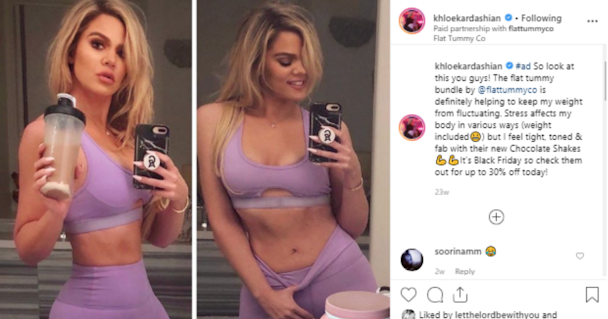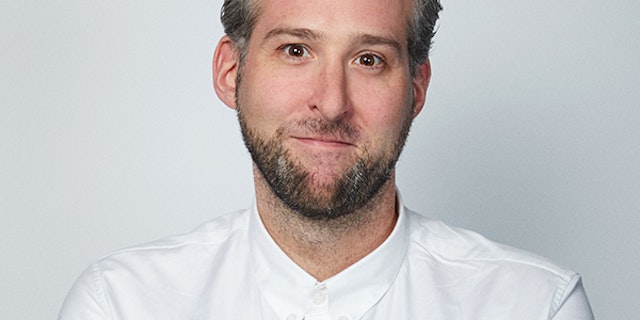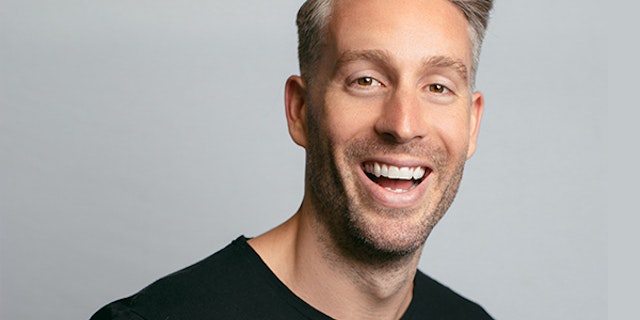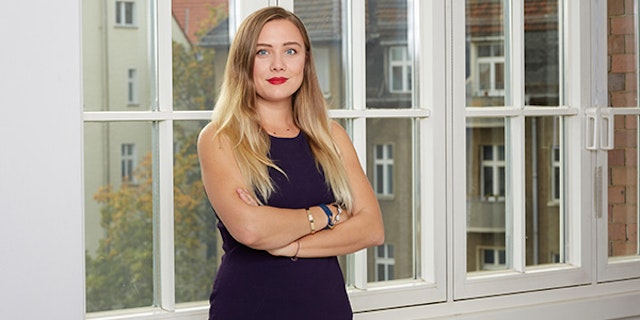Do brands need to change the way they work with influencers?
Concerns about fraud and transparency continue to dog the influencer world, while the economy that has grown up around platforms and the personalities that use them is still a young business.

Concerns continue to dog the influencer world, so should brands shift the way they work with social media stars?
To mark the launch of our special influencer-themed issue of The Drum, we asked marketers and media experts what’s needed to make the influencer sector a more sustainable business.
Should brands change the way they work with creators? How can influencers ensure longevity in this competitive game? And can the agencies that have sprung up to service the sector survive its many twists and turns?
Adam Williams, chief executive officer, Takumi

Brands are starting to change the way they work with influencers for the better. They’re no longer just dipping their toes into influencer marketing for one-off projects, but instead thinking about exclusive and long-term partnerships and how they can fit into their overall marketing mix.
Adopting a long-term mindset for influencer marketing campaigns will help boost the sustainability and authenticity of the sector. If consumers see influencers they trust posting about products in paid-for campaign content and out-of-home visuals, it re-enforces the idea that the influencer has a genuine affinity for the product and their brand endorsement can be trusted.
But for this to work, brands need to give influencers more license to be creative. Influencers are crying out for more creative control – 83% regard it as their first priority according to our white paper – and, while it may sound like a risk for brands, allowing influencers to choose their content boosts the validity of the post by making it more authentic.
While these may sound like incremental changes, they will go some way to rebuilding the trust eroded by scandals like the Fyre Festival. Brands must go the extra mile to embark on authentic and legitimate influence collaborations that help make the sector a more sustainable business.
Daisy Boateng, senior social brand manager, Maybelline

To make the influencer sector more sustainable, brands are already addressing how they interact with influencers, namely through send-outs and PR mailers now being less wasteful and rather something that can be put to good use after.
Not only is the sector becoming more physically sustainable, but also in terms of relationships too, with brands aiming to build genuine brand love by working with key influencers that truly love their products. This makes partnerships more authentic and sustainable overall.
Olly Lewis, managing director and founder, The Fifth

Despite its growth, influencer marketing is still in its infancy and more needs to be done to professionalize the space. Part of this process means addressing accountability and transparency across the entire supply chain.
This means influencers must be willing to share data with their partners, giving access to real time analytics that will help brands to assess the true value of their influence and their content. It’s only a matter of time before brands insist on this before they commission any content, so it’s important that influencers take the responsibility that comes with the revenue.
On the flip side, if brands want more control and want to demonstrate genuine ROI, they should be willing to pay storytellers what they are worth. As PR loses some of its grip on the medium and as it becomes a more integrated marketing channel in the mix, the age of gifting will be replaced by considered content planning and media budgets.
Rich Keith, chief executive officer, Fourth Floor Creative

We need to start by working out what we mean when we say ‘influencer marketing’. We believe that true influencer marketing needs to be defined as creating value for all players in the activity: brands, influencers and audiences.
Building authentic relationships between brands, creators and their audiences is the starting point. We also need to think about what platforms we’re talking about. We've reached a point where a lot of the conversation is actually about Instagram and simple product placement where most of the really deep communities and connections are on YouTube and more niche platforms, such as Twitch or TikTok. The best results come from creating unique, bespoke content that is tailored to specific audiences.
Andy Johnson-Creek, head of public relations, Help for Heroes

For charities, yes. 100%.
Charity content creation is a different ball game to the spiraling world of paid product placements. Cynicism doesn’t revolve around payment to such an extent as most charities can’t, and don’t, spend money on influencers. We mostly rely on those who believe in the cause, resonate with the brand and want to push our message.
Our data shows that when we work with influencers, our reach is on average four times higher than just going through our own channels. As a charity that relies on the public – for donations, fundraising, volunteers, signing petitions or championing causes – and which grew exponentially through celebrity endorsements, this is a powerful reason to keep tapping into influencers and their audiences.
Similarly, we know that by teaming up with other brands when using influencers, everyone benefits. We worked with fashion influencers in partnership with Debenhams and the data all round showed significant spikes in visits to our website, swipes, engagement rates and, ultimately, sales.
We’re using a similar model to harness the great support we have from the sporting world – something that resonates hugely with our core audiences. Last year alone we worked with current and former rugby players Johnny Wilkinson, Chris Robshaw and Rachael Burford to name a few, as well as teams including Scarlets and Sale Sharks.
Putting our brand into this space is a no-brainer. When influencers – macro, micro, celebrities, brands – truly believe in us, understand what we do and why, they are incredibly powerful brand ambassadors and spokespeople for us.
Sam Baker, journalist, former editor-in-chief of Red and Cosmopolitan and co-founder, The Pool

It all boils down to trust and authenticity. Creators and influencers aren’t the same thing and conflating the two doesn’t help. There are some amazing creators working in the influencer market, while some influencers are just money for old rope.
Depending on a single platform never makes sense. Influencer marketing needs to branch out beyond the core social media platforms – most pressingly Instagram given it’s changing algorithms to reduce organic reach.
A carefully nurtured community is key. Many influencers have forgotten why their followers follow them. And so have most of their followers. Followers want real intimacy, not artificial intimacy.
Use your own influencers. I’m a massive fan of the way John Lewis uses its partners, and also of Macy’s ’style crew’.
Don’t fall back on product placement – I’m astonished how many brands still do. Feeds rammed with endless sponsored posts infuriate the audience. But good content that’s well made will always be welcome regardless who paid for it. Dove’s ‘#showus’ work with Getty images was inspired.
It’s all about quality and delivery. There are plenty of creators who are creative, campaigning and fearless. Why work with those who sell their followers - and brands – a fake lifestyle?
Giselle Boxer, social media director, Tribal Worldwide London

Brands know that they should be doing influencer marketing, but many don’t know how to do it properly. This leads to one-off campaigns, which don’t have clear goals or objectives. The key is to commit to a long-term strategy, to look at what you want to achieve with the campaign, how can it be achieved and which influencers are best placed, based on their brand, audience size and demographic, to achieve it. The campaign should then be measured and optimised over a long period of time.
Brands should focus on finding the right influencer for their brand, that are in line with their brand values, whose audience are their target market etc. Influencer followings should be vetted to ensure that they are made up of the right demographics i.e. location, age, gender and engagement rates should be considered. Many influencers, particularly those that have been around for a while, might have purchased their followers, in order to increase their following. Brands should steer clear of these profiles as a high number of followers doesn’t always equate to a highly engaged audience of real life followers.
Work with a more diverse group of influencers, to ensure that the content resonates with the general public. Set expectations for your influencers content. Be clear on what you want from them or you could end up with really poor content. Push for more creativity. It’s not enough to just give an influencer your product and expect to get amazing and engaging content back. You need to work with your influencer to create great content that will stand out in a crowded market.
Harry Hugo, co-founder, The Goat Agency

Brands and agencies need to work closer with creators to ensure that they understand the creator’s audience and what resonates best with them. Long term partnerships or ambassador schemes will prove more fruitful for both parties. This is due to the clear influencer-brand advocacy in comparison to typical one off campaigns that may appear forced and inauthentic.
Understanding how to effectively use influencers as a new marketing channel is crucial for brands in 2020. Despite these partnerships, influencers are also self created personal brands who require a level of creative freedom in order for them to not lose out on what they stand for.
We’ve seen social media grow exponentially over the years and we will continue to see influencer marketing evolve and mature over time. As brands begin to understand more about it, so too will their understanding of the value and potential that this channel has.
Aaron Brooks, co-founder, Vamp

First and foremost, influencers need to have true influence and a genuine audience. No bought followers, no fake engagement. Then, robust measurements need to be in place to prove the channel's effectiveness. Like any paid channel, setting targets and tracking the meaningful metrics is essential.
I have no doubt that brands who rush into influencer marketing, without doing due diligence and setting realistic targets, will find themselves with an ineffective campaign. They’ll probably want to write off the channel altogether. But that’s like a brand running a banner ad with poor creative, on a website that attracts the wrong audience, then blaming digital advertising as a whole.
Each party has a role in ensuring the sustainability of influencer marketing. Influencers have to continue producing high quality creative and have a genuine connection with a real audience. Brands need to understand the importance of choosing influencers that are authentic and highly-relevant, before measuring the campaign against tangible targets. Then platforms, like ours, must monitor both sides to ensure what they're both doing is authentic and effective.
Melissa Weston, marketing lead, Zalando

The fashion industry is facing huge, complex challenges. The planet is suffering from the effects of climate change and unsustainable use of resources. Human rights and working standards are under threat. That’s why at Zalando, we’re introducing our customers to sustainable fashion, working with partners who share our vision and ethics, and doing more to move the industry forward, every day.
We also see this reflected in the influencer sector and for us, this begins by choosing influencers who are taking a stand on the most important issues today such as climate change, use of resources and workers rights. For many influencers, the trust that they have built with their community is instrumental in their success. Therefore when we choose people to represent our brand, it's super important that these brand values match on both sides, in order to make the partnership authentic for everyone involved – ultimately the end consumer.
While brands should provide influencers with key messaging, it is also important to remember that influencers have normally become influential by publishing the sort of content that resonates with their followers. In 2020, a big focus for us will be to select influencers that align with our values, to trust in the creativity of the creators that we work with and to make it easier for their followers to shop the way they want to – sustainably. We want to ensure that our customers have the inspiration and information they are looking for, all in one place. I think we will begin to see the public becoming more skeptical of branded content and move towards platforms like TikTok, which offer more 'realism' than a 'perfect' image on Instagram. In 2020, brands and their creators will need to adapt to this change in order to keep authority and influence with their customers and consumers.
Caroline Paris, creative director, Brave

Brands should work with ambassadors and collaborators, the passionate people who know their stuff and truly like a brand and what it stands for, not one off ‘influencers’.
Companies should aim for longevity, authenticity in the pairing and respect for the voice of the individuals they work with. Those that try to shoehorn themselves into an influencer’s feed for an easy win or mould individuals to fit into their own internal archetypes will slip down the pecking order.
As for the influencers? I think success in 2020 will belong to those who have clarity of their own ‘brand’ and the integrity to protect what they believe in, which will help to make the sector more sustainable. When it comes to partnerships, influencers might have to say ’no’ more than they say ’yes’ to ensure they are creating content with integrity – which isn’t always easy when partnerships pay your bills.
These are the collaborators who have a true sense of purpose, create content that resonates with consumers on a personal level and aren’t just in it for reams of vacuous Instagram fodder. Insta-fame will be won by those who live beyond their social channels to show more depth and breadth in their offering and who create content through collaboration with brands beyond the standard #ad.
The latest issue of The Drum explores the opportunities and ethics of the influencer industry, from pay gaps to paid posts for tobacco companies. We learn why marketers are turning to virtual influencers to boost their messages and how a new generation of agencies have evolved to compete in this crowded sector. Get your copy here.

